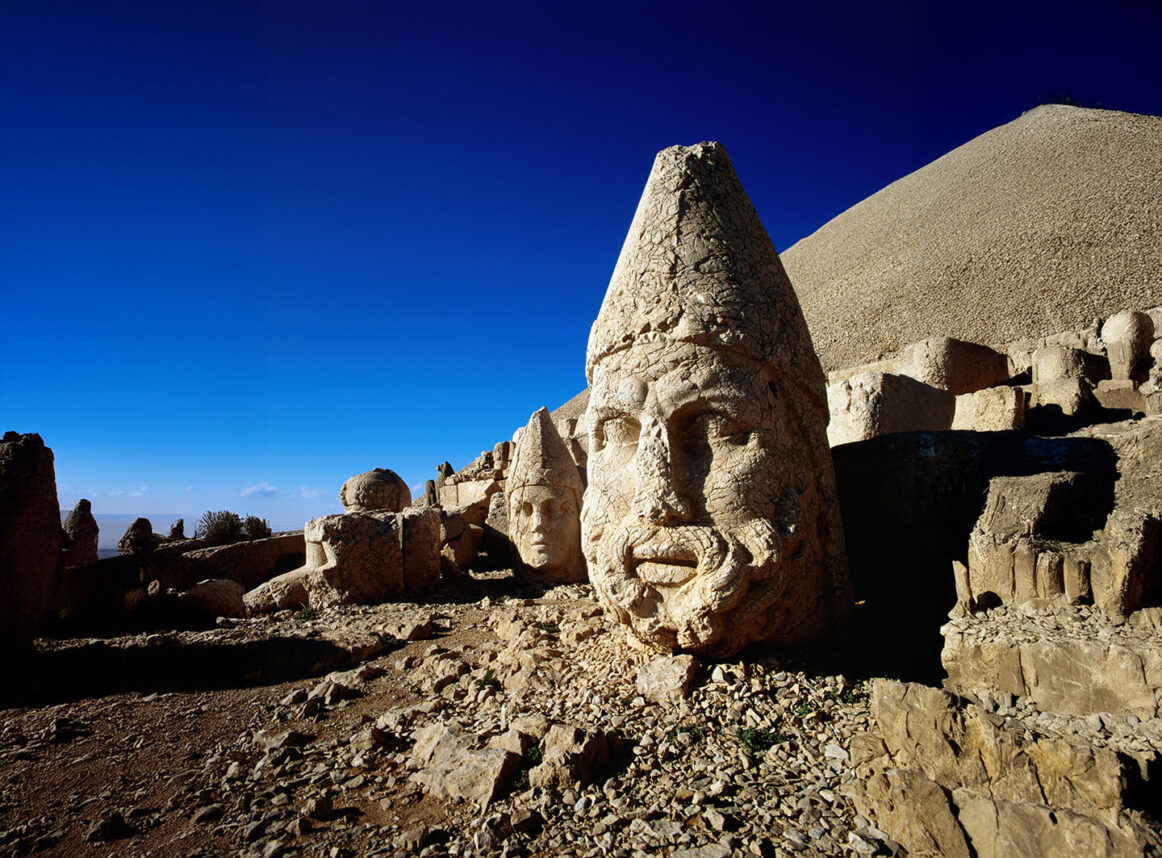
One verse, five voices. Edited by Salvador Litvak, the Accidental Talmudist
Then the Lord spoke to Moses, saying: Take the blasphemer outside the camp, and all who heard [his blasphemy] shall lean their hands on his head. And the entire community shall stone him.
–Lev. 24:13-14
Rabbi Janet Madden
Fountainview at Gonda Westside
The blasphemer’s story is a cautionary tale of a character who transgresses a sacred boundary. But punishment for cursing Hashem does not come directly from the Divine. Instead, responsibility for excising the corrupting influence of the blasphemer is, both literally and symbolically, handed to the people. The relationship between Israel and the Holy One is enacted through a three-fold sequence as the people are empowered to act by God’s behest, on God’s behalf.
First, those who have heard his curse lay their hands on the head of the blasphemer, highlighting the relationship of blessing and curse. In another context, this would be an act of consecration; here, it echoes the Yom Kippur ritual of placing the sins of the community on the head of the scapegoat. Next, as the goat designated for Azazel is led into the wilderness, so the community takes the blasphemer beyond the boundary of the camp for his punishment. Finally, death by ritual stoning is effected by the hands of the community members.
How can we not be moved by his story? Son of an Israelite mother and Egyptian father, he is denied a place among his mother’s tribe due to his father’s non-Israelite status, according to Vayikra Rabbah. It is not difficult to imagine rejection transforming to rage. It is not difficult to conclude that his blasphemy proceeds from a deep sense of alienation and despair—and to consider that while he becomes a human scapegoat, his is not the only sin.
Rabbi Michael Berenbaum
Director, Sigi Ziering Institute and Professor of Jewish Studies, American Jewish University
I wrestle with the Torah understanding that one must engage the text, ponder it, and regard it as an invitation to dialogue. And as I read this verse, part of me rebels and part of me remembers a moment when I celebrated symbolic stoning.
Let me explain. As a critical thinker and a formally trained philosopher I want to engage the blasphemer, grapple with the heretical ideas, challenge their thinking and mine. “Know how to respond to the apikorus. (heretic)” [Chapter 2, Mishnah 19 of Avot), the Talmud admonishes. Such an interaction strengthens my thinking, which must become better as a result.
I also know how urgent it is because Jewish Day School students don’t really know how to handle Holocaust denial, minimalization, trivialization, and falsification or how to respond to critics of Israel. They melt because they simply do not know how to handle dissent.
Yet I remember my deep satisfaction with how the Haredi community in Monsey dealt with the rabbis who attended the Holocaust denial conference in Teheran hosted by then President Ahmadinejad.
The New York Times reported:
“Since their return, they have been ostracized by synagogues, denied service at kosher stores and vilified in Jewish discussion boards on the Web. Posters have surfaced in the Satmar Hasidic enclaves of Brooklyn … asking Orthodox Jews to ‘totally cut off ties with this gang.’”
My own former teacher Rabbi Herbert Bomzer z’l put it succinctly: “If you shake hands with a Holocaust denier, you’re on his team.”
To know the difference between when to engage and when to expel requires wisdom. It is good that Jews don’t stone Jews anymore; it is bad enough that we throw stones at one another.
Rabbi Scott N. Bolton
Congregation Or Zarua, NY, NY
Once I Was Stoned
Because I was riding so fast
(after too many l’chaims at Kiddush)
Then a new club, red neon lights
The white marble of democracy
Clubbed me over the head
When the front tire jumped skipped the curb
Blue frame bent, flying over handlebars
One star, another
Percentage sign, exclamation point, ampersand
Constitution, a letter of the alphabet
Sirens sounded, the law on-scene
Wrapped in a blanket and bound to a gurney
The front tires peeled away with a screech.
I was screaming internally
“Didn’t I just come from shul?”
I would usually keep two quarters in my pocket on most Friday nights, And I didn’t even wonder at the time if
It was the money
Or it was the phone call I made.
After all, the wrinkled social worker I walked home
Before I went with friends to imbibe holier wine
Was a convert to Judaism because of what Hitler did,
His name be erased (why couldn’t he be the one, or should the Allies get the credit?),
And Einstein.
I should have stayed to listen to her stories (again) about why she loves God now
And how it shocked her family in Germany and Switzerland
That she gave up the gospel for the spoken Torah
But the key to my bike lock clanked with the quarter
And it was time to put on the hard hat, to ride my own waves of destiny.
I thought.
Until, I was stoned.
Miriam Yerushalmi
CEO SANE; Counselor; Author, Reaching New Heights series
The Torah instructs us to emulate Hashem, to behave towards others as He behaves towards us. The 13 Attributes of Divine Mercy, Hashem’s immutable characteristics of compassion, graciousness, kindness, patience, and, especially, forgiveness, are enumerated in the Torah following the sin of the Golden Calf. Those involved in that sin faced consequences, yet the incident served to highlight Hashem’s mercy. Here, we are instructed to react to blasphemy, a sin which seems much less severe than actual idol worship, with apparently extreme harshness. And why must “the entire community”, even those who did not hear his blasphemous words, be involved in this reaction?
Speech is in the category of action, thus blasphemy is an act of rebellion against Hashem. But not only is the blasphemer denying G-d, he is also inciting others to rebel. This is a step too far. His insidious words negatively affect all who hear them; if they repeat his curses, even without his negative intent, they spread his poison secondhand throughout the nation. The entire community had to actively participate in his punishment in order to show how abhorrent his ideas are and to prevent anyone else from adopting them. The Lubavitcher Rebbe explains that while the Torah’s consequences to our mistakes may seem punitive, they are actually merciful, because they allow us to rectify whatever spiritual or material damage we may have caused. We can emulate Hashem not by punishing others (or ourselves) for any damage, but by rectifying it with mercy.
Rabbi Natan Halevy
Kahal Joseph Congregation
Why this procedure? The witnesses on whose testimony this sentence was based were forced to quote the curse used by the blasphemer. Therefore they performed this symbolic act thereby transferring any guilt they had been burdened with through their repeating of the curse to the blasphemer before the latter was executed. Placing of the hands on the head is a foundation of Torah as all Torah punishments are according to the sin. Cursing Hashem is the greatest sin, therefore the hands are placed on the head as this is the ‘head of all sins’. This person has brought negativity to Hashem who is the ‘foundation and head’ of all.
Why did the Torah tell us the episode of this man’s blasphemy which caused disrespect for Hashem? This story is actually complimenting the Jewish people, since only one person had committed this sin during the forty years in the desert.
The elements of this crime are pronouncing the holy Name and then uttering a curse upon it. This is derived from the verse: “the son of the Israelite woman pronounced the name of the Lord and cursed it.”
Blessing Hashem is done in an opposite manner, i.e. first concentrating on the individual letters of the tetragram and on their meaning and subsequently pronouncing the name (in the permissible formula). When done in such a manner one qualifies for the reward due to people who bless the Lord. The reward for following this procedure correctly is long, blessed spiritual life.






















 More news and opinions than at a Shabbat dinner, right in your inbox.
More news and opinions than at a Shabbat dinner, right in your inbox.